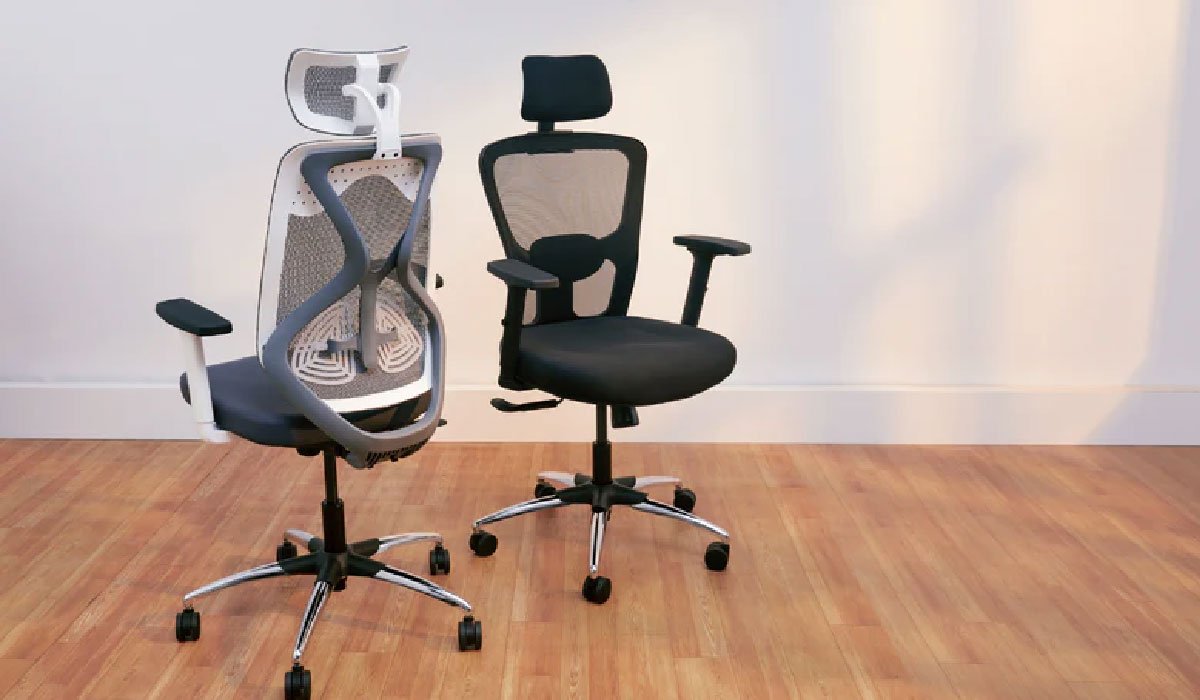Life Style
The Science Behind Ergonomic Office Chairs and Employee Comfort

In the modern workplace, office furniture plays a crucial role in employee well-being and productivity. Among the various elements of a workspace, ergonomic office chairs have gained significant attention due to their impact on posture, comfort, and overall health. Businesses investing in quality office furniture are not just enhancing aesthetics; they are actively improving the work environment and, consequently, employee satisfaction.
A poorly designed office chair can lead to discomfort, poor posture, and even long-term health complications. Employees spending extended hours at a desk require support that encourages proper spinal alignment and reduces strain on the body. Ergonomic office chairs, designed with scientific principles in mind, address these concerns by promoting natural movement and reducing the risk of musculoskeletal disorders.
Understanding the science behind ergonomic seating involves examining how these chairs influence posture, circulation, and cognitive function. Research has demonstrated that investing in well-designed office furniture, including ergonomic chairs, contributes to increased workplace efficiency and a reduction in work-related injuries.
The Principles of Ergonomics in Seating
Ergonomics is the study of designing environments, tools, and systems to fit the needs of the human body. When applied to office chairs, ergonomics ensures that seating supports the natural curvature of the spine, promotes healthy circulation, and minimises unnecessary strain on muscles and joints.
A key aspect of an ergonomic chair is its adjustability. Standard office chairs often provide minimal support, forcing employees into static positions that may not suit their body type. In contrast, ergonomic chairs offer features such as adjustable seat height, lumbar support, and armrests, all of which contribute to a more customised seating experience.
The seat height of a chair should allow the user’s feet to rest flat on the floor, with knees positioned at a 90-degree angle. This alignment reduces pressure on the lower back and enhances blood circulation. Additionally, a well-contoured seat pan helps distribute weight evenly, preventing discomfort in the thighs and hips.
The Importance of Lumbar Support
One of the most significant elements of an ergonomic office chair is lumbar support. The human spine has a natural S-shape, and sitting for prolonged periods without adequate support can lead to slouching and lower back pain.
Ergonomic chairs incorporate lumbar support that follows the natural curve of the lower spine, maintaining proper posture and reducing the risk of developing chronic back problems. Some chairs offer dynamic lumbar support, which adjusts to the user’s movements, ensuring continuous support throughout the day.
Studies have shown that employees using chairs with proper lumbar support report less fatigue and discomfort compared to those using traditional office seating. Over time, consistent support can contribute to long-term spinal health, reducing absenteeism due to back-related issues.
Encouraging Movement and Active Sitting
Sedentary behaviour is a growing concern in office environments. Prolonged sitting can lead to stiffness, reduced circulation, and an increased risk of cardiovascular disease. Ergonomic office chairs are designed to encourage movement through features such as seat tilt, recline functions, and swivel bases.
Dynamic seating allows employees to shift positions throughout the day, preventing muscle fatigue and joint stiffness. Chairs with a slight recline help reduce pressure on the lower back while still maintaining an upright posture. Additionally, some advanced ergonomic chairs incorporate balance mechanisms that engage core muscles, promoting active sitting.
Encouraging employees to take short breaks, stretch, and change postures can further enhance the benefits of ergonomic seating. When combined with height-adjustable desks, ergonomic chairs contribute to a more dynamic and health-conscious work environment.
Impact on Productivity and Cognitive Function
The comfort of office furniture directly affects an employee’s ability to focus and perform tasks efficiently. Discomfort and poor posture can lead to distractions, frequent adjustments, and reduced concentration levels. Conversely, ergonomic chairs create a supportive environment that enables employees to remain engaged and productive for longer periods.
Research has shown that employees with comfortable seating are more likely to maintain energy levels and exhibit higher job satisfaction. A well-supported posture allows for better oxygen flow and circulation, enhancing cognitive function and reducing feelings of fatigue.
Employers who prioritise ergonomic office furniture not only improve physical well-being but also foster a positive work culture. When employees feel that their comfort is valued, they are more likely to be motivated and committed to their roles.
The Psychological Benefits of Comfortable Seating
Beyond the physical advantages, ergonomic office chairs contribute to psychological well-being. Chronic discomfort and pain can lead to stress, anxiety, and decreased job satisfaction. Providing employees with high-quality seating can significantly improve morale and create a more enjoyable work atmosphere.
A well-designed office space with ergonomic furniture signals that a company cares about its workforce. This investment in employee comfort can enhance job retention, reduce workplace stress, and contribute to a more collaborative and positive work environment.
Choosing the Right Ergonomic Chair
With a wide variety of ergonomic chairs available, selecting the right one requires consideration of several factors. Features such as adjustable lumbar support, seat depth, and armrest positioning should be evaluated to ensure they meet individual needs.
Mesh-backed chairs promote airflow, reducing heat build-up, while cushioned seats offer enhanced comfort for extended sitting. Some chairs incorporate headrests for additional neck support, which can be beneficial for those who frequently recline while working.
Testing a chair before purchase is advisable, as personal comfort preferences vary. Companies investing in ergonomic seating should also provide guidance on how to properly adjust chairs to maximise their benefits.
The science behind ergonomic office chairs highlights the essential role that proper seating plays in employee comfort and overall workplace efficiency. By supporting natural posture, reducing strain, and encouraging movement, these chairs contribute to both physical well-being and mental focus.
Investing in high-quality office furniture is not merely about aesthetics—it is a strategic decision that enhances employee satisfaction, reduces health issues, and boosts productivity. As work environments continue to evolve, prioritising ergonomics will remain a key factor in creating healthier and more effective workplaces.
For More Information Visit Loopermagazine
-

 Celebrity1 year ago
Celebrity1 year agoWho Is Jordan Broad?: The Untold Story of Ashley Broad Husband
-

 Celebrity1 year ago
Celebrity1 year agoWho Is Mary Ryan Ravenel?: Inside The Life Of Thomas Ravenel’s Ex-Wife
-

 Celebrity1 year ago
Celebrity1 year agoWho Is Noelle Inguagiato?: The Untold Story Of Jesse Watters Ex-Wife
-

 Celebrity1 year ago
Celebrity1 year agoWho Is Dolphia Parker?: Everything About Dan Blocker’s Wife
















